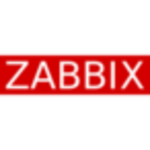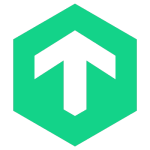How has it helped my organization?
The main benefit we get from that is it's a quicker time to know what's wrong. It does help us to have a better mean time to resolution, but the cool thing is, it lets us get to the root cause faster.
What is most valuable?
My favorite part of the solution is the ability to drill into the transaction snapshots. The transaction snapshots let you find out where the application broke; it pinpoints where in the call stack, and then how long it took to resolve. If there is a known error code there, it gives you some great information about what happened to the transaction. We can see what the hot spots were, not just the core error that was found. You can also see how long you're spending in the different modules, how long you're spending in your longest running database files, and so on.
What needs improvement?
We have a lot of mainframe technology in our business. They're just barely getting into Java-based z/OS agents. They have just started to appear inside AppDynamics now. We would love to see support for more types of agents in the mainframe world. We're a very heavy financial transaction company. A lot of our largest platforms still have a significant number of mainframes, and it's not just one type. We've got Tandem, Stratus, HP; we run the whole gamut for both what we have or what some of our clients might be running.
What do I think about the stability of the solution?
We are only having trouble with one aspect of the solution. The rest of the solution has actually been quite solid. We're actually quite pleased with it.
We’re having difficulty with the Apache web agent. It seems to be consuming too many resources of AppDynamics. One of their core philosophies is that they don't want to cause any harm in the application that they are monitoring. In this case, this is their only agent that does misbehave, and consumes a little more resources than you would like.
What do I think about the scalability of the solution?
Luckily, we haven't had to add more resources to it. Before we went into our AppDynamics installation, we brought in AppDynamics consulting, their professional services group. We looked at the number of transactions we were going to be doing. When they sized our environment, they guided us to the right amount.
How are customer service and technical support?
Technical support is better than in most of my experiences with most companies. They don't solve tickets as fast as we would like, but hey, who does? They are responsive; they will work with you; they make you feel like they are paying attention to the problem. Our sales engineers, especially; our local sales teams, they're fantastic for the support we get from them. They are definitely above par from what I have experienced from other vendors.
Which solution did I use previously and why did I switch?
We previously used a competitor's product. The company was OpTier, which was going bankrupt at the time. When they announced their bankruptcy, we started an RFP. We brought in, actually, 14 different companies who responded to our initial proposal. There were four finalists that came in and did demos, and then we whittled that down to just two companies that we put into a head-to-head competition. Then we had different people from different product teams throughout the company score the process along the whole way. We had people from the support side, app devs, database guys, system admins, system devs. Everybody gave their scores and when it came down to it, the two companies and their scores were nearly neck and neck.
What pulled us in, what won it for AppD, was pricing, at that point.
How was the initial setup?
Initial setup wasn't complex. We were involved from the start on it. Our team is still on track for how we first architected the product versus how it's been deployed today. It's the same folks. For getting the controllers up and running, getting the product up and running, there weren’t any technical challenges that were unexpected, whatsoever.
What other advice do I have?
It's definitely worth using. The overall impact the tool has had in our environment has been very positive. Some of the best success stories we have got from the product have actually come from VPs over those different product areas, when they find out how AppDynamics scored a critical win. My advice to the other teams would be to involve all the other product teams, everybody who's going to be involved with it. Get them involved early on into the adoption, on what it can do. You don't want to have management overseeing it and not know what the product is.
You want that buy-in early on in the process, especially with a high number of applications. We have over 2,000 applications on our radar that we're going to instrument into it. Getting buy-in for cooperation, not only to schedule and prioritize, but which ones are getting in, on whose orders, and who's getting disrupted on it. The competition among senior management for who was going to get it first became quite intense later on.
We’re pretty happy, except for the web agent. That's the only part where we have some angst over the product. We've had discussions about that with AppDynamics.
Disclosure: My company does not have a business relationship with this vendor other than being a customer.

















